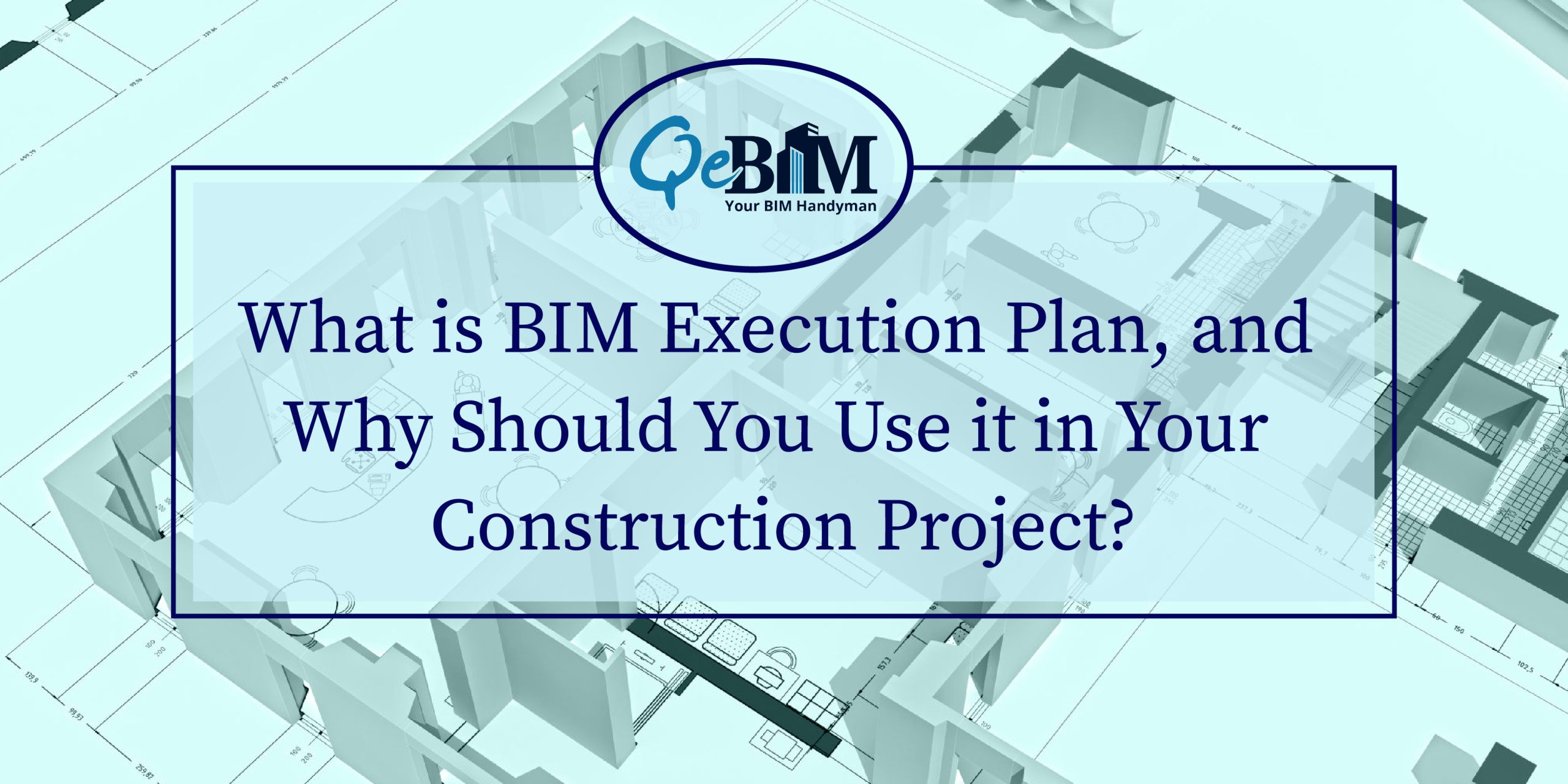What is BIM Execution Plan, and Why Should You Use it in Your Construction Project?

Building Information Modelling has transformed the AEC industry and the way AEC professionals work to plan, design, build and operate any structure. Viewing the effectiveness and positivity of BIM, its adoption has increased over the decade.
The most important aspect of BIM Modelling Services is ‘Information,” and to effectively tag along the Information Modelling, a detailed plan is required; here is where BIM Execution Plan comes into the picture. The objective of BEP is to facilitate information management in the project and to bring the BIM methodology and model to practice.
What is the BIM Execution Plan?
The BIM Execution Plan (BEP) is a fundamental document that defines the project’s goal, scope, and framework for implementing the BIM methodology. It is a comprehensive document that addresses the client’s requirements, defines the objective, workflows, roles and responsibilities, tools and software, development and revisions, operations, and management to be followed through the implementation. In short, BEP keeps all stakeholders and teams involved, connected, and updated in real-time on each step along the way to ensure the construction stays streamlined and accurate information is accessible to everyone at any time. BEP is, therefore, an essential element to create before any construction model, especially for large or complex which involve many collaborators and crucial decision-making. A well-crafted BEP is mandatory for efficient project accountability, productivity, and coordination.
What are the Types of BIM Execution Plans?
There are mainly two types of BIM execution plans, as explained below:
- Pre-contract
Pre-contract BIM plans are the ones that are the very initial plans presented during the proposal stage. It is designed to address the Employer’s Information Requirements (EIR) and the project goals for collaboration and information modeling. It consists of the key project milestones and assists in how the project’s information model will be assembled and delivered.
- Post-contract
Once the contract has been allocated, the contractor makes the post-contract BIM plan. It must include the comprehensive EIR and the list of the agreed targets for the timely delivery, exchange, reuse, and final handover to clients. It will also consist of the roles and responsibilities allocated along with the workflow, a Task Information Delivery Plan depicting the responsibility of each supplier, and a Master Delivery Plan depicting the timeline, protocols, and procedures.
Elements of the BIM Execution Plan
The BIM Execution Plan consists of many elements as listed:
1) Project Information like project number, brief description, location, and other project details.
2) Project goals, the scope of work, and BIM use for projects.
3) Key contact person and team with defined roles, responsibilities, and protocols.
4) Strategy Planning and the Implementation process throughout the project lifecycle with the team required and key deliverables.
5) Key performance indicators
6) BIM information states the model elements and the detail required to implement each using BIM.
7) Technology infrastructure requirements like the hardware, software, and network relevant information needed to execute the plan.
8) Project milestones and the timelines to achieve the same.
9) Project budget and plan
10) Standards to be followed
11) Project Information Plan (PIP)
12)Task Information Delivery Plan
13) Master Information Delivery Plan
14) Working procedures stating BIM volume maintenance, ambiguity avoidance, tolerance levels, tools and software to be used, etc.
15) Contract Terms
Importance of BIM Execution Plan
BIM Execution Plan acts as a guiding document for the members involved in the project to identify and execute the function BIM provides at various stages of the project; it helps them to communicate and collaborate effectively and lets them stay on the same page with clear objectives and targets at every step along the way.
1) Ensures On-time Project Delivery within Stipulated Budget
Since the details like process, roles, and workflow are clearly stated, the team involved will better understand the path they have to follow and their contribution leading to the timely delivery within the predicted or given budget.
2) An Effective Collaboration Model
BEP will define a clear communication structure among the team involved, i.e., every member is well aware of the project information, its communication, circulations, and coordination with specified timelines.
3) Defined Standards and Protocols
BEP helps a lot when executing projects globally as it defines the standards and codes for countries respectively and states the protocols to be followed mutually when international teams are involved avoiding chaos and confusion while BIM execution.
4)Project Transparency
BEP usually is available and accessible to every team and its members. This makes them and others involved in the project well aware of each one’s roles and areas of work and their set-out expectations within the project. BEP keeps all of them informed about their responsibilities in case of any unfortunate events or emergencies, how they can overcome it, who is responsible for providing a solution for it, and so on.
Stimulate and Communicate Effectively With BEP
The construction companies must create a structured BIM execution plan to state the necessities of your construction project, its planning, resources required, their roles and capabilities, strategies, timelines, and budget. With an effective BEP, you can avoid hassles, streamline the work processes, and clearly understand the core building blocks for construction modeling and scale profit.